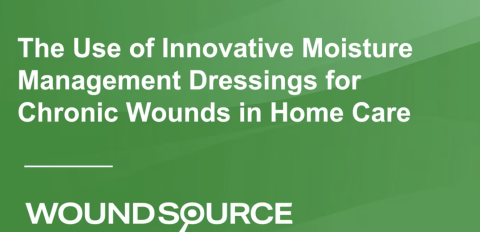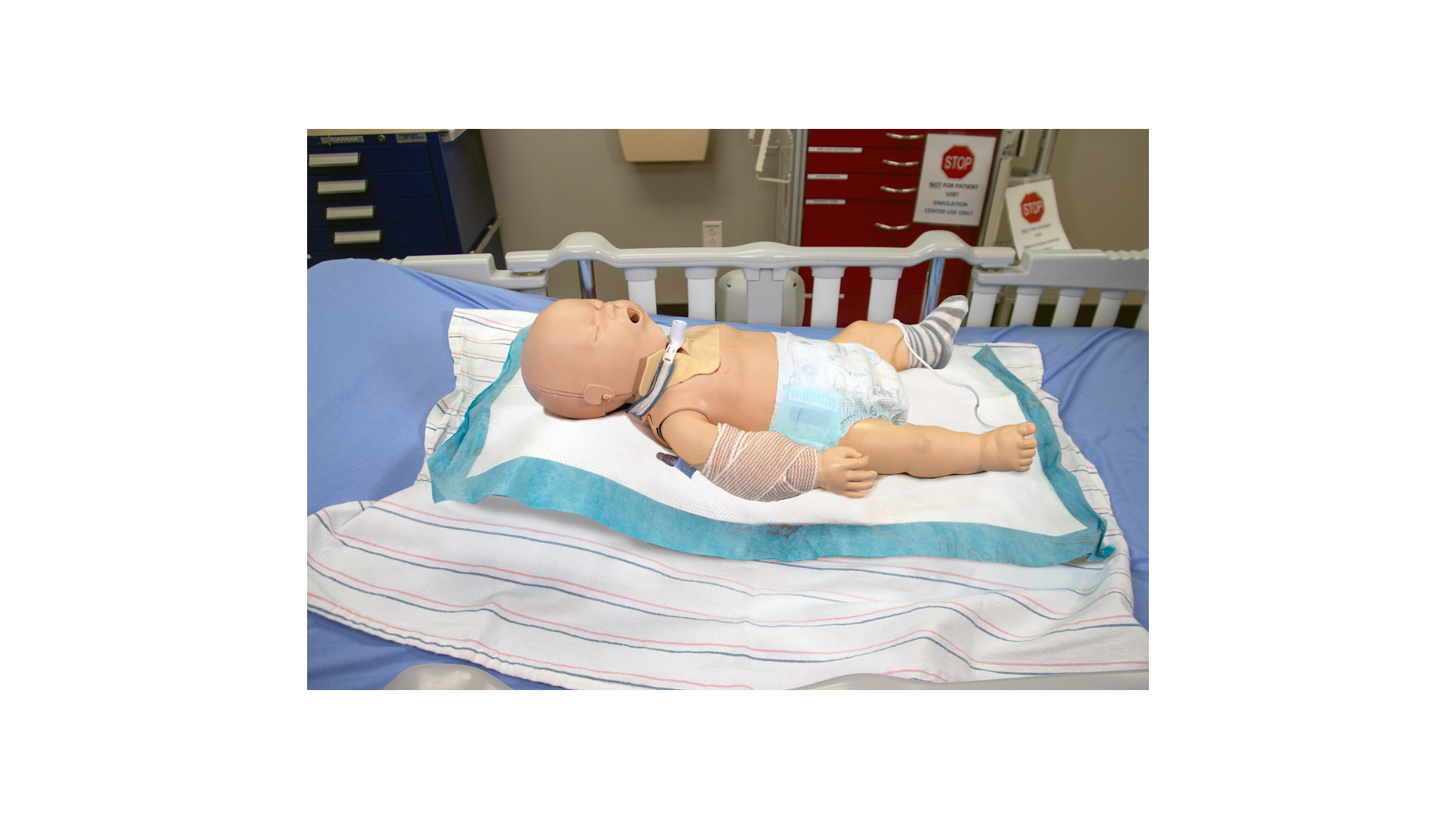The Use of Innovative Moisture Management Dressings for Chronic Wounds in Home Care
September 30, 2024
Editor's Note: In this video interview, Linda T Miller, PT, DPT, CLT, CWT, shares key insights from her poster, "Healing Beyond Expectations: The Use of Innovative Moisture Management Dressings for Chronic Wounds in Home Care," presented at the Symposium on Advanced Wound Care (SAWC) Fall in Las Vegas, NV, in October 2024.
© 2024 HMP Global. All Rights Reserved.
Transcript
Hi there. My name is Dr. Linda Miller. I'm a physical therapist, a certified lymphedema therapist, and a certified wound therapist. I've been practicing lymphedema management for over 30 years, and over that time it just seemed as though coming into the wound care sphere seemed like the natural fit. Right now, I'm actually doing home care for Achilles Home Care, which is right outside of Philadelphia.
So, the poster is rather simple, but I think it's important for home care agencies to realize that, with using different products, they're able to get better results more quickly. And my interest in wounds allowed me to be able to pick up a bunch of chronic wounds, which we oftentimes see in the home care setting. And what I decided to do for the poster was pick 3 different chronic wounds, all of which had been chronics for at least or a minimum of 18 months, some longer than that. And they all had different etiologies. One was a vascular wound that was caused by trauma. A second one was a surgical wound status post total hip replacement that would not heal. The actual hip appliance needed to be changed twice and it still wouldn't heal. And then the third is just your typical venous leg ulcer. And what I did was basically just do appropriate wound care, whatever that might be; 2 of the 3 required compression, so I did that. But the one common product between all 3 of the cases was the product TRITEC, which actually allows what they call AFM technology, which is advanced fluid technology. And what I saw with that was that it was able to really keep the moisture balance of the wound exactly what we needed to promote wound healing.
I think I've been interested, I went to SAWC back last spring and was talking with a couple of colleagues of mine who have been in the wound care sphere for a while, and they actually were the ones that suggested that, Linda, you've got a case series here. Why don't you put together a poster? And as I did a little bit more reading, what I really realized is that in the home care setting, these products, which would be considered advanced wound care, are lacking. And so I decided to just put a brief poster together, a series of case studies where it really was using probably the most basic of advanced wound care. I wanted to let other home care clinicians know that, with a simple tweak one way or the other with your treatment, primarily, what you choose to treat, you can actually get successful outcomes. And so that was very important to me to let the rest of the wound care, home care world know that these patients don't have to have the chronic wounds they live with in general.
Once I had begun to use compression, and I was using 2-layer compression as well as primarily, initially, as I was kind of before I learned to do a little bit more, I was using sort of your gauze and regular dressings, maybe something a little bit more high tech than the gauze, but certainly not TRITEC, as I wasn't aware of it. And as soon as I switched to using a different dressing with active fluid management, the wounds exponentially healed quickly. And so I think that's what surprised me, is that these products are not readily available or readily used in the home care setting. And that if they were, a lot of these patients that are home bound and lived with chronic wounds for years would actually recover or heal much more quickly than they had in the past. And in the case of my 3 patients that I showed, none of them had actually healed, as I said, for at least 18 months and had pretty much every other treatment in the book of basic wound care.
Well, first I can say that I believe that probably any wound could benefit. My specialty is really vascular wounds. In our agency, the nurses usually handle pressure injuries and I'm usually pulled in for vascular injuries. And I think that, and I've got many pictures of this to document, one of the things that makes the advanced fluid management technology really, really special is that it actually whisks away fluid from the wound bed, or excess exudate, so that when you actually take the piece of dressing off, you literally will see an imprint of the wound and then just this extra fluid that's been whisked away. And so again, I think what it really does is help to maintain that optimal wound fluid balance, exudate balance, so that the wound actually has a best environment to heal.
I think that probably that's one of the impediments as to why, when we talk about the term advanced wound therapy, and I have my own opinion on that, but I think that one of the things is that the idea is these products are a little bit more expensive and you sort of need to be able to find vendors that can provide you with the dressings. And what we found, and where I was lucky, was that my clinical nurse manager of the practice was willing to actually put out the initial outlay of cash when I got a vascular patient and would buy the TRITEC and then the 2-layer. And once I was able to get series after series after series of clinical outcomes, we have now been able to convince several insurance companies to actually pay for 2-layer compression as well as TRITEC. So we've been able to convince our payers, and some of them are Medicaid, some of them are Medicare managed care. And we've been able to, through outcomes and a little bit of cost analysis, show them that it's cheaper to do it on the front end, get the wound healed more quickly, than let the wound go and be treated 5, 6 days a week with old technology.
Well, I think probably one of the first things that I'd like to make a comment on is we use the term advanced wound care, and a lot of times just your typical, especially maybe a home care therapist or maybe not someone who's doing wound, who has not taken a lot of education on wounds, actually thinks, wow, this is stuff that I would never use. It's advanced. And what I've learned by doing this work and attending different meetings is this term advanced wound care as a continuum and starting with compression in the right dressing, moving all the way down the line to skin substitutes and some of the other high technology that probably in the wound care setting we won't see, but there's no reason at all for us in home care to not apply compression when it's appropriate. Obviously, according to the etiology of the wound, it's ABI, its appropriateness and using the appropriate moisture gathering dressing. So for me, the right dressing and compression, 2-layer compression in particular really should now sort of be standard of care as opposed to advanced wound care. If it was standard of care, more and more home care agencies might look into it and not think of it as something as well, we don't have anybody qualified to use it.
So what I really wanted the poster to portray is that with basically just changing the dressing that these patients had been using for months and months and months and getting better moisture management, we were able to heal the wounds much more quickly with about 80% less intervention from the standpoint of many of these wound patients at home, they are getting their dressing change daily, maybe a couple times a week by a wound clinician. And then the family does it the other days, and all of these patients were seen 3 times a week by me, no family intervention in between. And so that basically comes down to an that 80% decrease in utilization of resources. And my feeling is that the 80% decrease in resources, utilization resources. can actually then help mitigate the cost of maybe a more expensive product on the front end, but you heal that wound and eliminate any other issues like sepsis or hospitalization down the road because you've healed it more quickly.
I hope that therapists that aren't familiar with even the most basic of advanced wound therapy, and when I say therapist, I mean clinicians, nurses, and PTs or whoever is doing the wound care, begin to familiarize themselves with just the most basic of the advanced product and see if it's appropriate in your case setting and try to incorporate it and see what results you get. I find that I'm still learning adding different products, but my mainstay has really been two layer compression and this innovative dressing.
The views and opinions expressed in this content are solely those of the contributor, and do not represent the views of WoundSource, HMP Global, its affiliates, or subsidiary companies.








